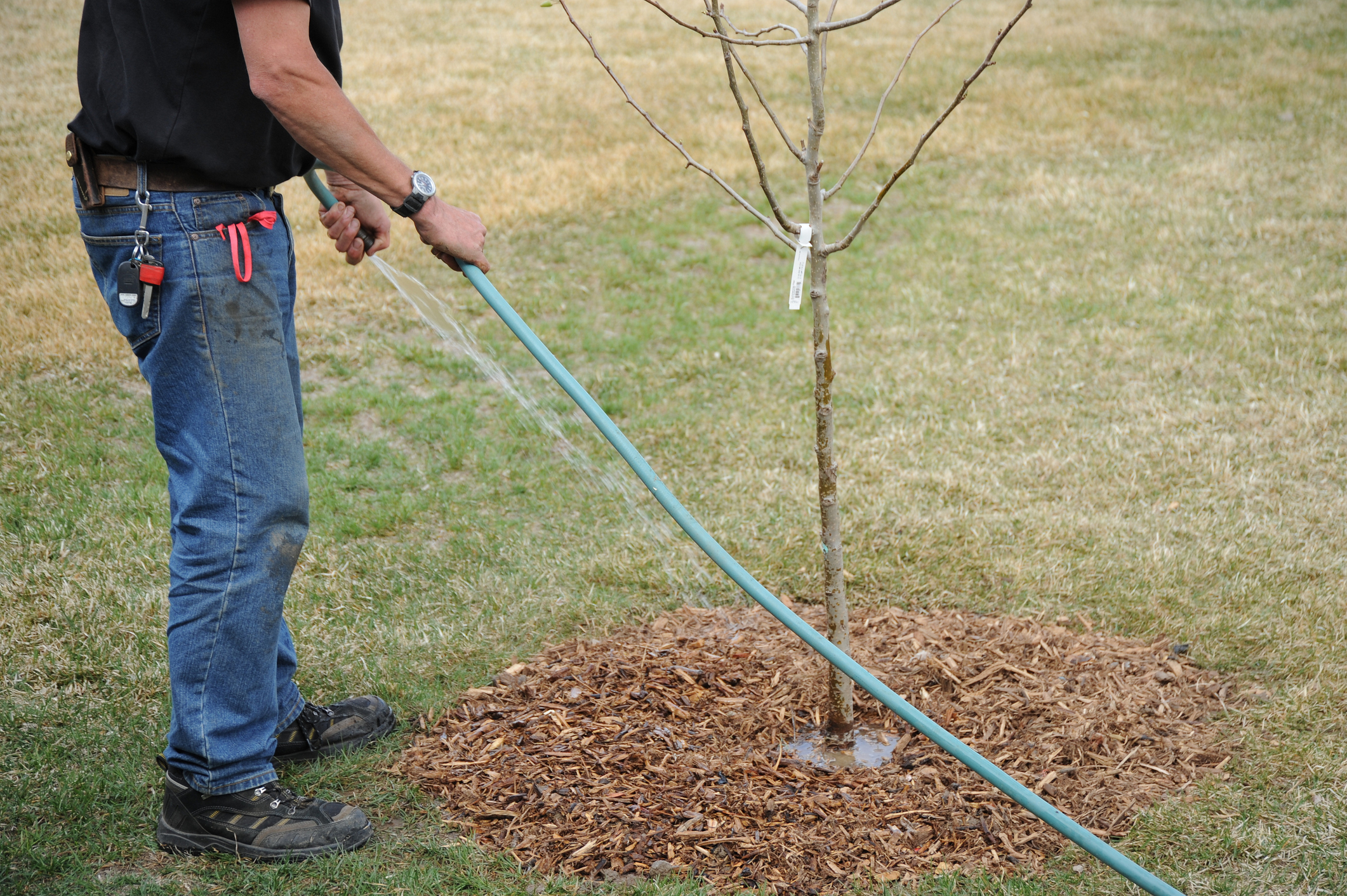Quench your trees’ thirst: give them a few more long drinks

With Utah’s hot, dry summers, homeowners often need help determining the right amount of water needed to keep their landscape trees healthy. While many Utahns are ready to stop watering their lawns until spring, they should consider giving their landscape trees a few more long drinks before the ground freezes.
“Trees are the most valuable plants in a landscape and should be prioritized for irrigation,” said Shital Poudyal, Utah State University Extension ornamental horticulture specialist. “Unlike grass, which can recover quickly from drought, trees require deep and consistent watering to maintain health and stability. Proper irrigation helps trees develop deep root systems, which are essential for withstanding winds, drought, and other environmental stressors.”
To ensure adequate irrigation, Poudyal suggests these tips:
- Use point irrigation methods such as drip irrigation or a slow-running hose.
- If possible, avoid short, frequent watering sessions. They will only wet the soil surface and encourage shallow root growth. If such watering is unavoidable, supplement irrigation with long and deep watering, even if the soil is wet.
- Install emitters with appropriate flow rates, adjusted for soil type and tree size.
- Avoid placing drip emitters too close to the tree trunk to prevent disease.
- Adjust irrigation frequency based on seasonal changes, reducing the need for water during cooler months.
Poudyal said a general rule of thumb is 10 to 12 gallons of water for each inch of trunk diameter.
“The average garden hose delivers about 13 gallons per minute, but you probably want to deliver it slower so you avoid runoff and get a good, deep watering,” he said.
Poudyal said USU Extension has developed an irrigation calculator to assist in this process, ensuring that trees receive the right amount of water without waste.
“The irrigation calculator provides a simple yet effective way to determine the water needs of landscape trees,” he said. “The tool takes into account various factors, including tree canopy size, evapotranspiration data, and soil type to calculate the precise amount of water required.”
Click to see the Landscape Irrigation Calculator for Utah for in-depth information on calculating tree and landscape irrigation.
For further information, contact Poudyal at [email protected].



